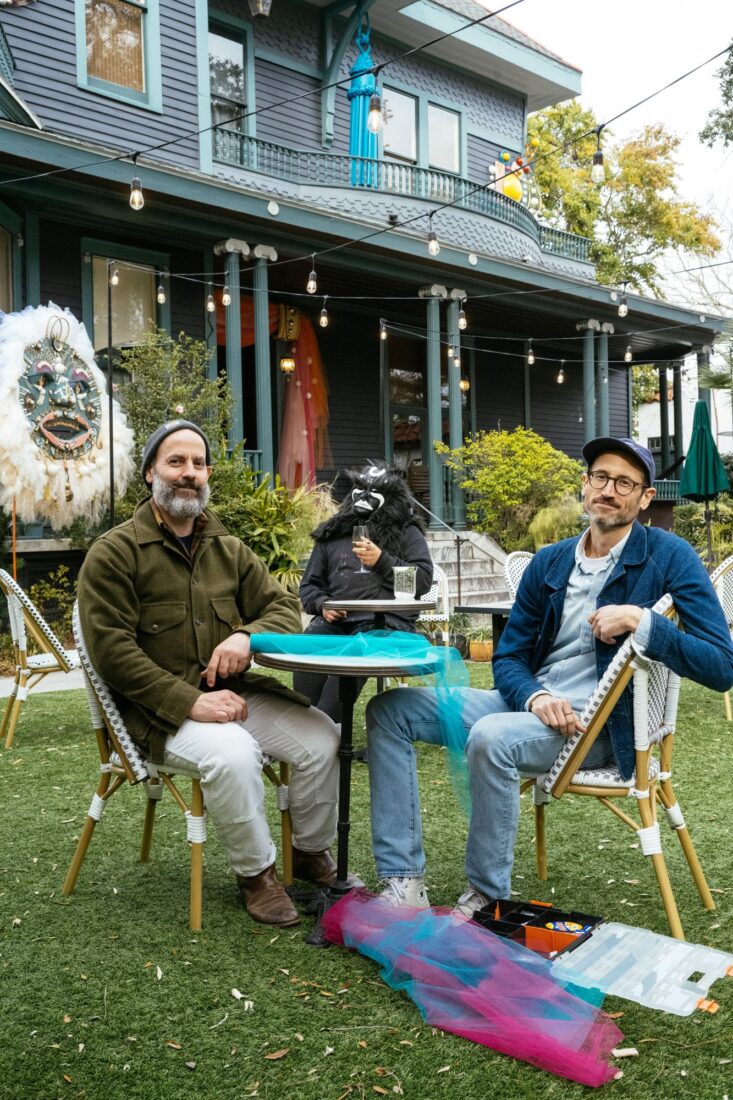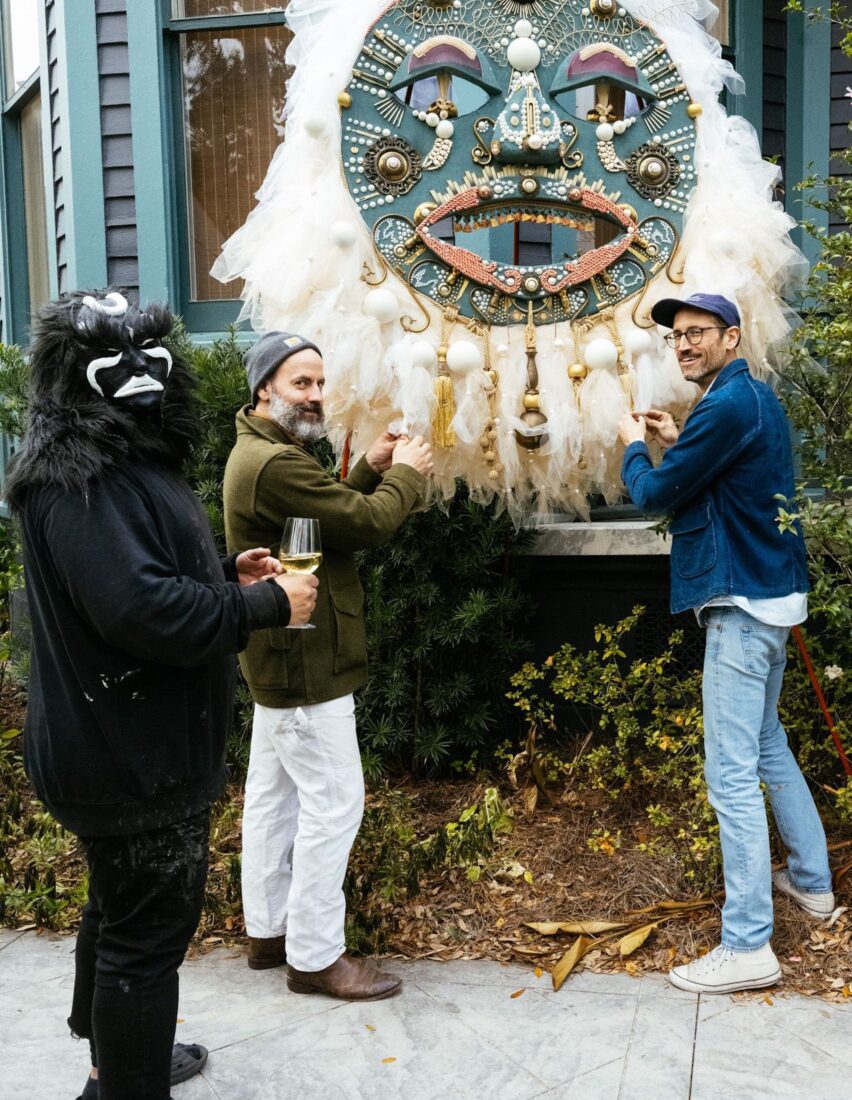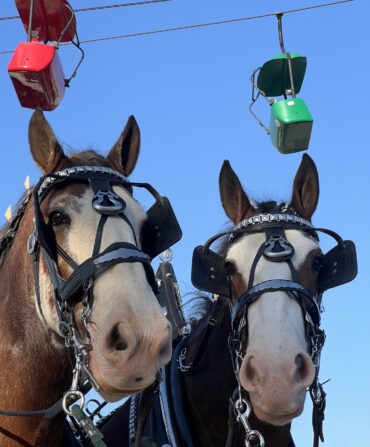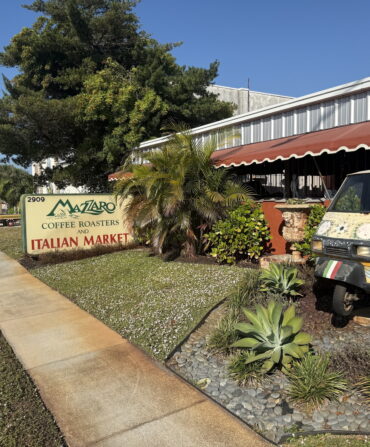This early Mardi Gras, amid the costumed crowds cheering for the marching bands and the papier maché floats streaming down St. Charles, a giant mouth hangs open. The mouth of Opulina is three feet wide, lipped in pink cord, and toothed with tassels; it seems to speak from the beyond.
A creation of artist Basqo Bim, the six-foot-tall mask was hung on the façade of the Chloe as part of the hotel’s Carnival transformation into the ancestral meeting place of the Mystic Krewe of Eh La Bas—an immersive installation of sculpture, florals, and hundreds of yards of tulle created in collaboration with dynamic decorating duo the Judy Garlands. Opulina and her krewe-mates are no ordinary ornaments. Constructed from objects foraged during Basqo’s walks in the Upper Ninth ward, these masks manifest the spirit of New Orleans: a place that collects and excretes bouillon fringe and filigreed doorbells, costume jewelry, chandeliers, and lots and lots of beads.

When the Chloe asked the Judy Garlands—Grant Sutton and Ben Miller—to replace their Christmas concept with a fresh take on Carnival decor, Basqo leapt immediately to mind. Having moved in next door to the artist in 2023, Sutton knew not only that Basqo’s work was inherently linked to Carnival, but that his material practice was the antithesis of the flagrant waste of the parades, when tons of plastic pearls and tin doubloons rain onto the crowns and into the storm drains.
Going foraging with the artist, Sutton says, was “eye-opening, life-changing.” Basqo gathers old architectural hardware out of dumpsters, begs bins of unsold jewelry from thrift stores, and takes home discards from his work as a costumer in the film industry to make his art. “It’s trash,” Sutton says, “but when it’s taken apart and organized in his studio, it becomes alive in a different way.”

“It came from a place of need,” Basqo says. “I ended up here accidentally five years ago. I had no money. So it was about maximizing everything I had around me.” And maximized it is. Sorted according to size, type, and spiritual affinity, New Orleans’ rubbish is reincarnated into works of art, assemblages not just of wire and fabric, paint and found things, but of story and performance. The wearable masks and giant pendants Basqo creates all have a name, a legend and a backstory which come to Basqo the longer he sits with them, a process of creation he likens to channeling—“pulling from this other ether.” At the Chloe, Opulina is a new initiate to the Krewe, waiting on the doorstep to be welcomed in by laughing Migajita, scowling Mirringuita, and Naditica the wise.
World building became a defining feature of Basqo’s work after he arrived in New Orleans. He’s from South Carolina originally, but his more recent move from Portland proved to be a turning point in his career. “Experiencing Carnival firsthand,” he says, “witnessing everyone bringing forth all these bags of treasures from their closets and transforming overnight—fired something off in my brain that had been dormant for a while.” He moved from a two-dimensional practice involving cross-stitch, embroidery, and drawing into a four-dimensional, immersive realm, where sculptures are not just hung but inhabited.
Whence the Mystic Krewe of Eh La Bas. A common refrain in New Orleans’s music, Eh, la bas! (Hey, over there!) is a call across a crowd or invocation of something beyond this plane. Dancing past Opulina this Carnival, you might hear her sing it out.








